Lab Report #1
By
Jordan St. John – Grade 7 (held back)
Question:
Given the tendency of beer brewed with a significant quantity of hops to undergo changes to its chemical nature in direct sunlight, there has recently been introduced to the market a line of glassware that claims to prevent this transformation.
The chemical change is the result of ultra violet rays affecting the iso-alpha-acids in beer and converting them to a compound called 3-methyl-but-2-ene-1-thiol (and commonly referred to as prenythiol). This results in a detectable aromatic compound which is frequently referred to in polite circles as “Light Struck.” In impolite circles, people are likely to refer to you as a “pie-r square” and make unflattering comments about your radius.
Bru-V glassware is fashioned of hand-blown brown glass which boasts natural properties preventing this occurrence. It is an established fact that brown glass bottles have become the industry standard in North America partially because of their ability to render light struck character a non-issue.
The question, as it pertains to brown glassware being able to prevent lightstruck reaction may be cogently condensed as follows:
Is this a whole bunch of bullshit or what?
Hypothesis:
If Bru-V’s claim to prevent skunking is correct, then we should be able to prove it in a formal testing setting. This will require the rental of a cummerbund.
Independent Variable:
Given that the lightstruck reaction occurs primarily with clear and green glass, it makes sense that the independent variable for this experiment should be the glassware that beer is poured into. As a control for the experiment the same beer will be poured into each glass. Today, that beer has been supplied by Sam Adams: Rebel IPA. It is important that the beer, as a control variable contain real hops and not hop oils which are impervious to lightstruck character.
Dependent Variable:
The lightstruck effect observable in beer should depend wholly upon the character of the glassware utilized in our experiment.
Materials:
-One Sam Adams Branded Speed Opening Church-Key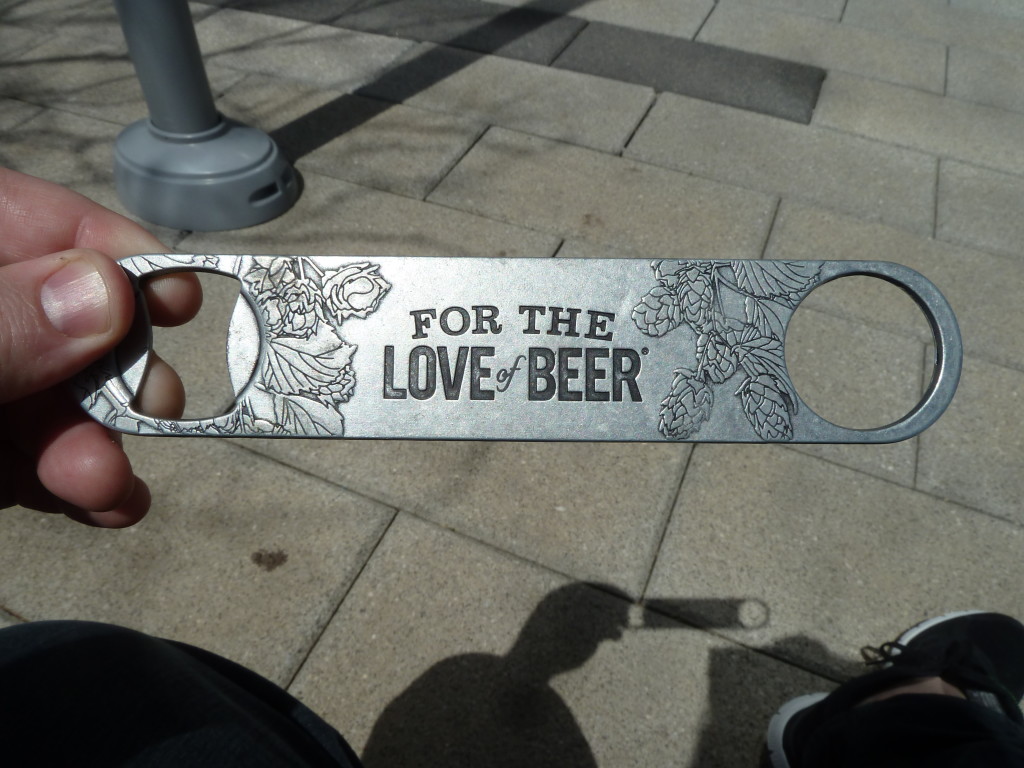
-Two Bottles Sam Adams Rebel IPA: Date Coded December 2014. A 6.5% 45 IBU West Coast IPA.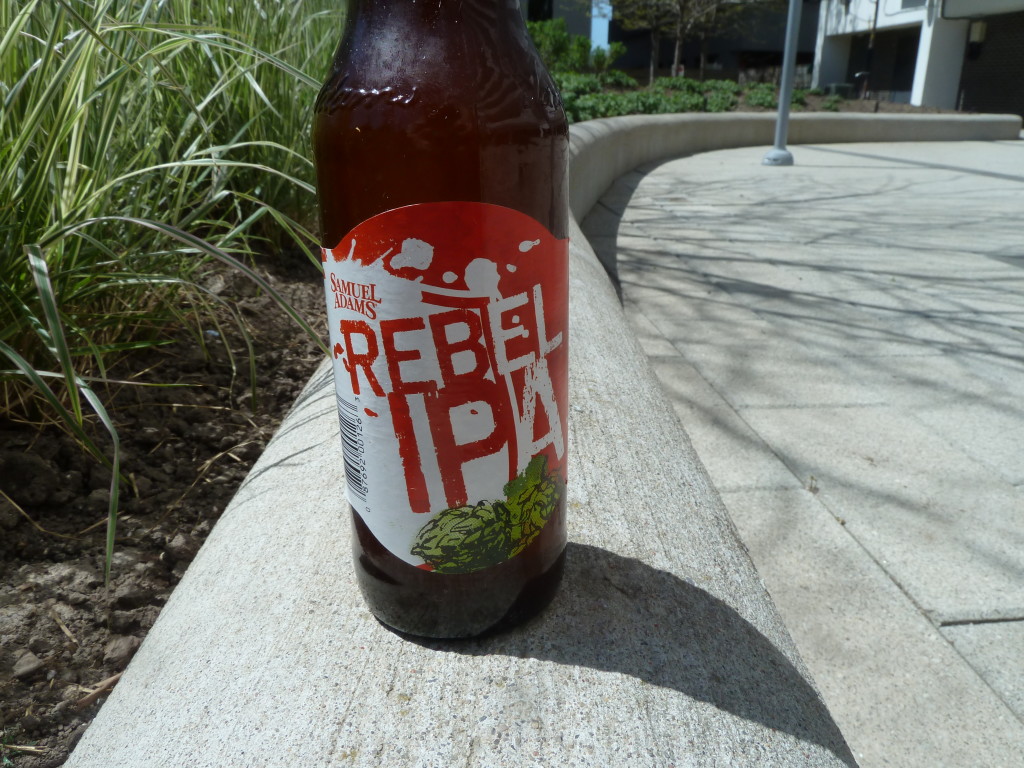
-One Branded Sam Adams Glass (Clear) Subsequently Referred To As Sample A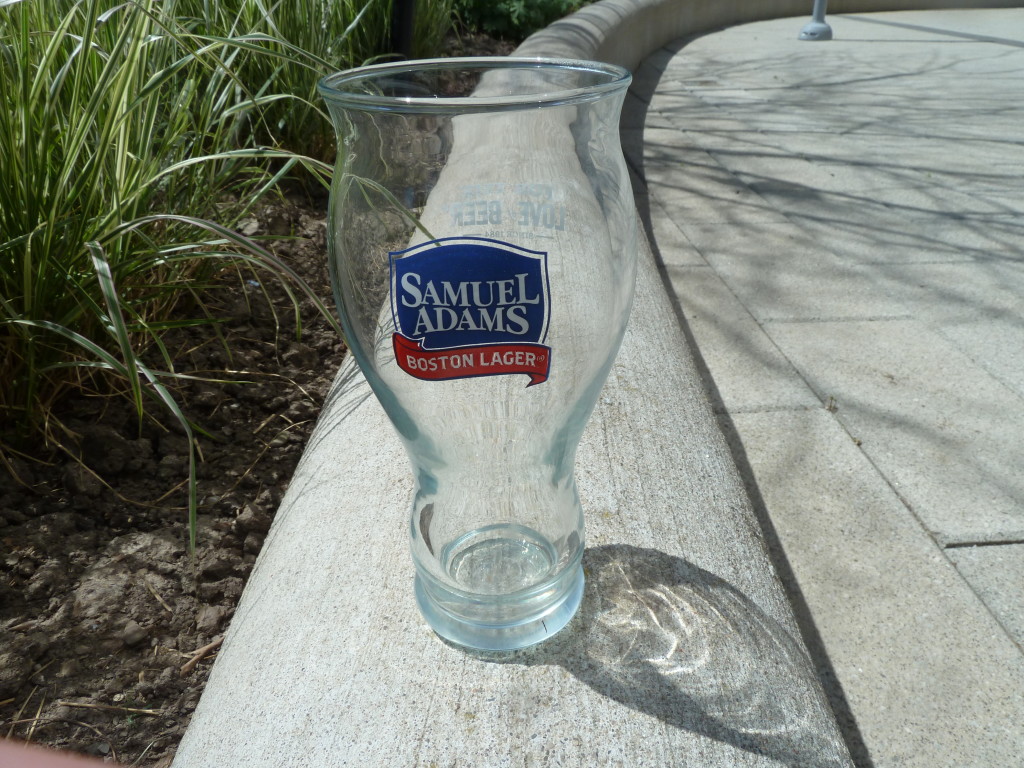
-One Bru-V Branded Glass (Brown) Subsequently Referred To As Sample B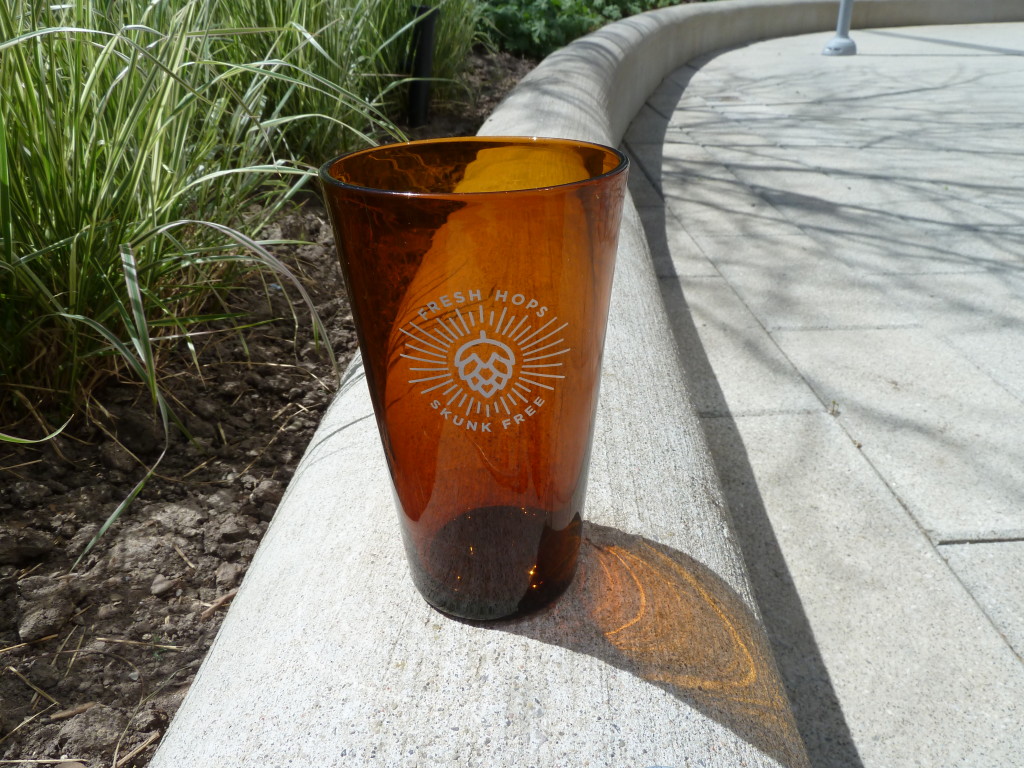
-One Certified Cicerone (Scruffy)
-One HTC Android based Stop Watch
-One Conveniently Located Fusion Reactor Emitting Ultra Violet Light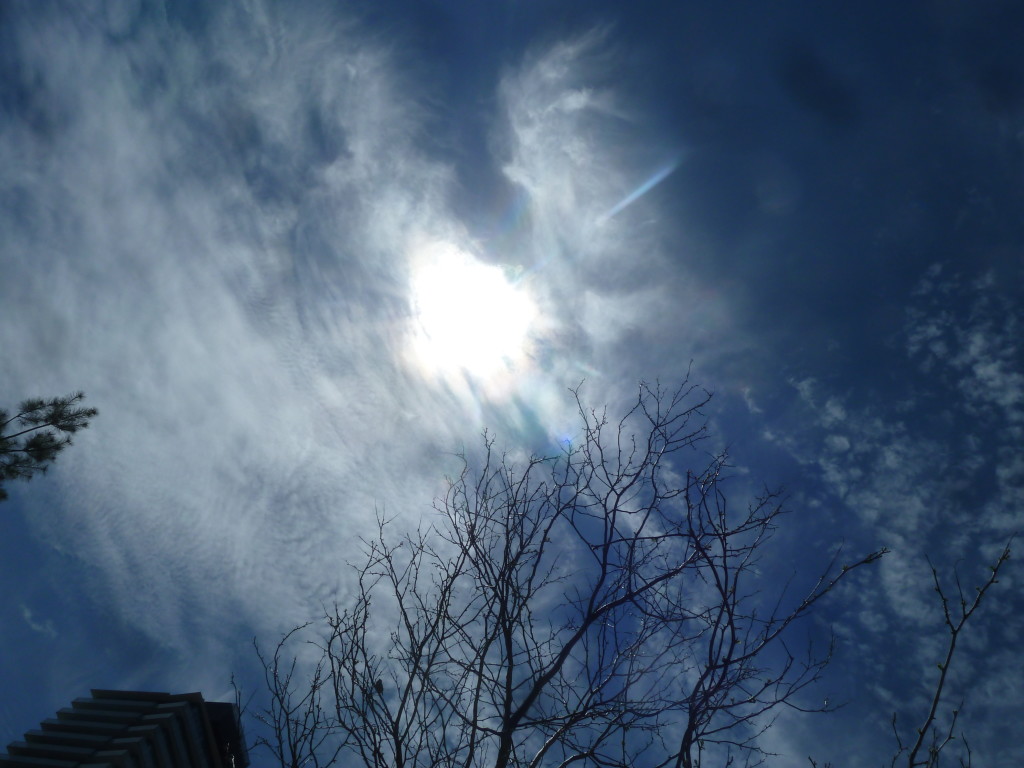
Procedures:
Both glasses will be set in the sun at approximately 1:05 PM on a patio with no significant light obstruction. Over a period of 30 minutes, beer in each of the glasses will be evaluated using olfactory sensation at set intervals. This period of duration has been suggested by Dr. Chris Schryer of the Castro Institute For Cask Ale Consumption and his attitude is recorded as follows (sic): “If it takes you more than half an hour to drink a beer, you’ve got more problems than lightstruck beer.” Conditions note a Moderate UV index on a spring day at approximately 21 degrees Celsius. It is, colloquially speaking, T-Shirt weather.
Observations:
At the instance of pouring, both Samples display good head retention. The Sam Adams Rebel IPA is clearly a well-made product. This is irrelevant to the scientific method in this instance.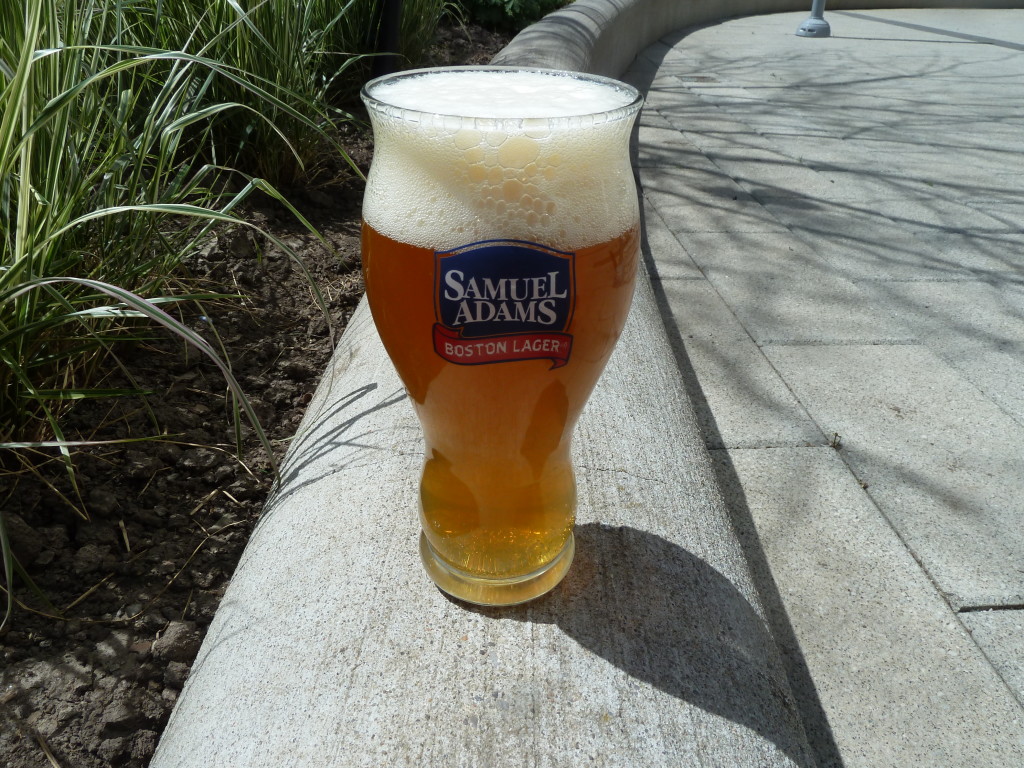
At five minutes into the process Sample A has noticeably developed an off flavour. There is no reason that such a change should not develop instantaneously. Sample B experiences no such transformation. The malt character seems to overbalance the hops in Sample B.
At fifteen minutes, Sample A’s lightstruck nature has receded somewhat in terms of aroma. Sample B has issues with hop balance, but experiences no negative effects.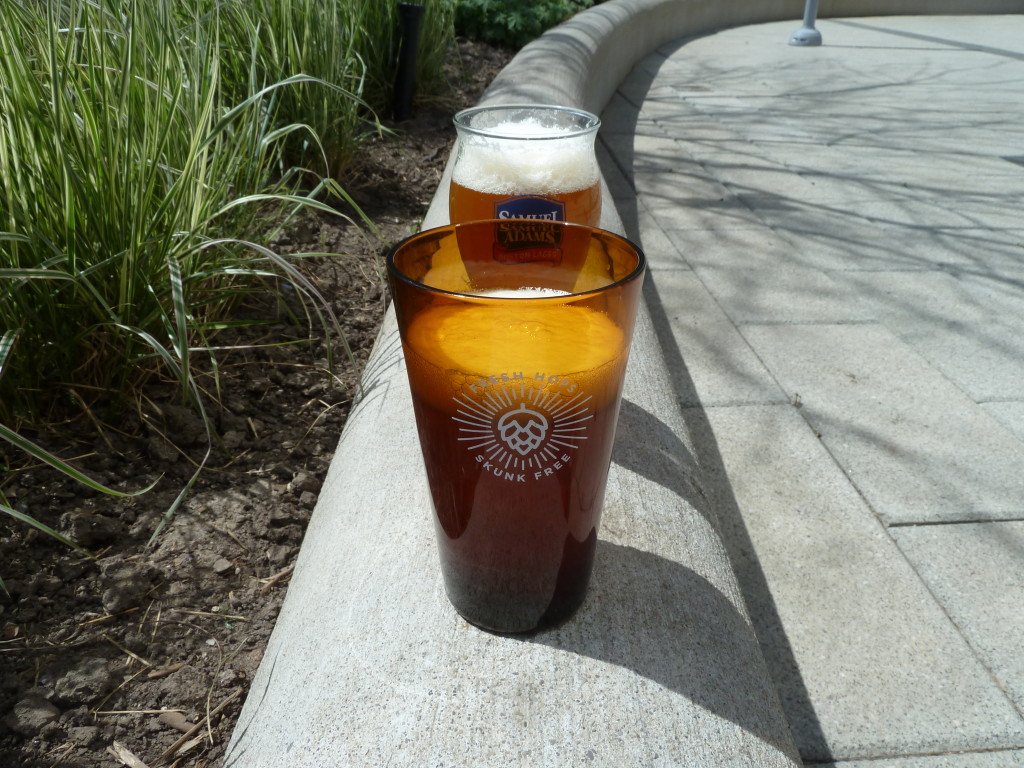
At thirty minutes, Sample A is an undrinkable trainwreck and is poured unceremoniously into the garden as a thirsty contractor installing cable on the side of the building nearby looks on angrily. Sample B is humanely disposed of by a Certified Cicerone. He observes that Sam Adams Rebel IPA is trying really hard to be too many things and that the Latitude 48 was a more distinctive product. He fruitlessly cautions a billionaire who he refers to primarily as “Jimbo” that trying to emulate things other people do isn’t going to win you the hearts and minds of the audience. He is summarily ignored, but he feels better for venting.
Results:
While Sample A did nothing to prevent the control beer from skunking, Sample B managed to prevent the reaction for a period of half an hour.
Analysis:
Interestingly, the criticism most frequently levelled at the Bru-V glassware has to do with the fact that the top is wide open and that light will still effect the beer on a patio because some degree of surface area is exposed. When you compare the cylindrical volume of Glassware Sample A to the Bru-V Glassware, it’s clear that a wholly transparent vessel of clear or green glass has exponentially more surface area than the few square inches at the top of the Sample B which are directly exposed. I suspect that a well made beer with adequate head retention would obviate even that fractionally vulnerable surface.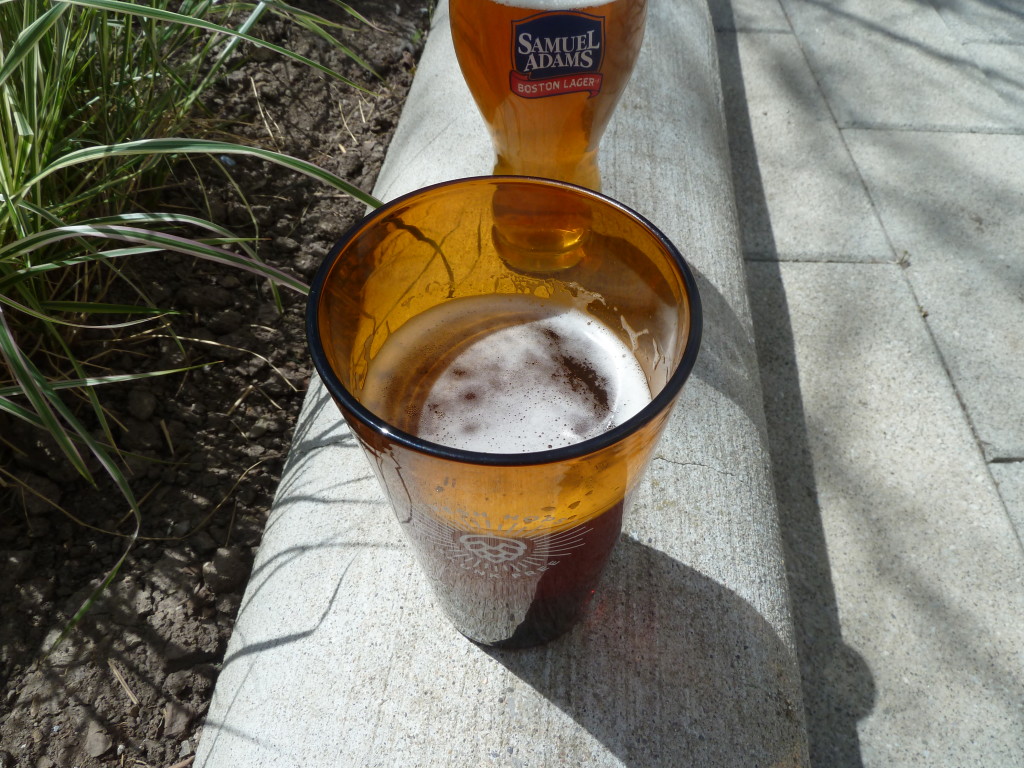
The only other difficulty worth mentioning is that the brown glassware tends to take away from the visual excitement of a well poured beer. That is a qualitative observation relating to personal preference and we here in Grade 7 deal only with the quantitative. In practice, it’s a matter of personal choice: pretty and skunky or obscure and correct.
Conclusion:
Call me Susan and slap my daddy, the damned thing works.
B+
I told your mother last parent-teacher interview night that she had to start counting the bottles of beer in the fridge, as I suspected that you were stealing samples.
Also, you’re missing an appropriate bibliography.
Mr. Kripke, 7th grade Science
(Other than that, great post!)
You need a hobby, Susan.
Oh, hell. I felt bad for making fun of the product in the national paper without testing it properly. You gotta make good on the thing or why would anyone trust you.
Srsly, though, I have read that oxygen retards the reaction that causes skunking, and therefore it shouldn’t happen, or not so noticeably, in the open air as compared to when the beer is still in the bottle. Your experiment, however, suggests that this is, as we say in Cockney rhyming slang, cobblers’ awls.
It is indeed a load of Uncle Ted’s Apples and Pears, me old China Plate.